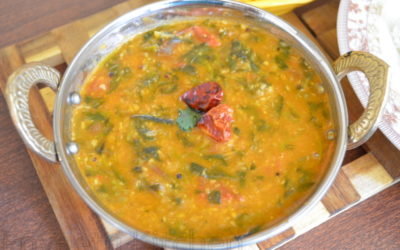The word roti is derived from the Sanskrit word rotika meaning ‘bread’. The Indian bread, is a staple food of the wheat growing regions of India, mostly in its Northern and Western belt. Although now, the roti is much in demand and relished even in the rice growing areas of the East and South states of India. This is because consuming rice has been much maligned by pharma companies, quick-buck-making nutritionists, health enthusiasts and doctors, as the no- no food for such lifestyle diseases as heart problems, blood pressure, obesity, diabetes, etc. The Roti is a round flatbread made from stone ground wholemeal flour (called atta), and water that is combined into a dough. Unlike its Western counterpart, the roti does not require a fancy oven, is unleavened (i.e. no raising agent like yeast or baking powder is used in its preparation) and therefore far more healthy than breads made in bakeries.
While wheat is a primary grain used for rotis, a wide variety of gluten-free grains and lentils such as grams, millets, jowar, bajra, maize, rice, amaranth, rajgir flours, are used as healthier alternatives to wheat flour, much to the delight of health conscious and vegan food enthusiasts. Rotis always need accompaniments such as vegetables, curries, pickles and the like to savour them.
There are a wide variety of flatbreads made of refined flour (maida) called naan, which are alien to Indian traditional cooking and do not find mention in the Bhagasastra.
Preparation
A roti dough is rolled out into flat round, square or triangular shapes, and cooked on a flat or slightly concave iron (or clay) griddle called a tawa. There are also a variety of rotis made using a traditional Indian oven called the tandoor, especially in the state of Punjab, where the flattened dough is stuck to the inside wall of the tandoor, where it bakes quickly at a high temperature. In everyday life and homes, the roti rolled out is called chapati and is made of whole wheat flour mixed into dough with water, edible oil or ghee and optional salt in a mixing utensil called a parat, and is cooked on the tava. Variations of the chapati include the phulka (in Punjab, Maharashtra, Gujarat) and maani in Sindhi.
Some roti recipes do use a home-made souring process called khameer, as also buttermilk, yoghurt, etc., for variety and healthier options.
Ingredients
The primary ingredients in rotis/pancakes are stone ground flour, salt (optional), and water to form the dough. Rotis are made into savories with the use of jaggery, coconut, etc.
Khameer For Roti Preparation

In North India, to prepare roti they add some sort of sour ingredient. This is called ‘khameer’.
There are few types of Khameer.
1st Type:
Method:
1. Take 2 bowls containing ½ padi of water each. Wash them well.
2. Add a few drops of gingelly oil in one bowl, spread well, add clean water and let it boil.
3. Once the water starts to boil, turn off the fire and let the temperature of the water reduce to warm.
4. Add 2 ru.e of bengal gram.
5. Take another bowl and cover the first bowl with it.
6. Make sure both are in the same size so that the mouth of both the bowls are evenly covered.
7. Keep the bowls carefully into the ash and bury them. After 3 hrs, the clean water will appear foamy and it will have a sour smell.
8. Add ½ padi wheat flour to the above mixture. Clean the bengal gram with water and use this water also to the flour and knead it well.
9. Keep it for 72 min or 96 min. Now the khameer is ready
10. To do roti, mix 40 r.e of wheat flour with 1r.e of khameer.
11. Take the same quantity of wheat as the quantity of Khameer to make the same amount of Khameer.
12. Once the amount decreases, follow the above step to prepare the sour water(by mixing water and bengal gram) and add and mix into the left out khameer.
2nd Type:
Method:
1. Same steps to be followed as in the first method.
2. Instead of bengal gram, add 3 palam of sugar into boiling water.
3rd Type:
Method:
1. Instead of bengal gram, mix 1¾ r.e sour curd, 15 r.e wheat flour/grits, powdered saunf or fennel seeds place it on a cloth, tie it and hang it.
2. Check whether it has puffed up.
3. Add the flour little by little and use it as mentioned in the 2nd type.
4. Do not let it get too sour.





0 Comments